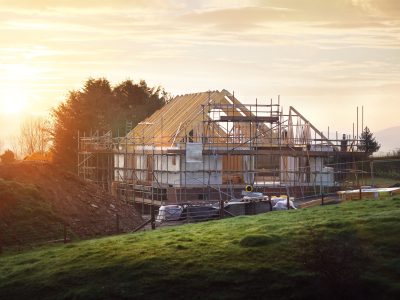
The Indian real estate market is booming.
With rising economic growth and rapid urbanization, the market is estimated to reach a size of $1.3 trillion by 2034 and $5.17 trillion by 2047, according to a report by realtors body CREDAI.
With a focus on sustainability fuelling a reimagination in the way buildings are constructed, the adoption of green leases is also seeing a rise.
Harish Fabiani, group chairman of Americorp Ventures and co-owner of India Land, a real estate development firm, breaks down the concept for Invezz.
What is green leasing?
Green leasing is a new approach to real estate contracts that incorporates sustainability objectives in the settlement between the landlord and the tenant.
It focuses on energy efficiency, water conservation, and lowering waste, encouraging each party to contribute towards achieving environmental goals.
Unlike conventional leases, green leases create a shared duty among stakeholders to reduce environmental impacts.
Why is it crucial for the Indian real estate sector?
This approach is crucial in the Indian real estate sector, as it singlehandedly contributes nearly 40% to the overall emissions.
In recent years, the significance of sustainability within the Indian real estate sector has grown notably.
This increase is prompted by the government’s push for green buildings and smart city initiatives, as India remains the third-biggest CO2 emitter globally, producing over 30% of the emissions.
What are the key elements of green leasing?
Today, the key elements of green leasing consist of energy audits and water efficiency measures, in contrast to traditional lease agreements that often ignore these environmental elements.
Multiple reports have highlighted LEED, GRIHA, and WELL building certification as the key rating systems adopted to build sustainable commercial real estate.
It also outlines India’s sustainability goals, which include attaining net zero greenhouse gas emissions by 2070 and drawing 50% of energy from renewables by 2030.
How does green leasing help stakeholders financially?
Sustainability in the real estate sector is crucial not just for the environment but also for the finances of the stakeholders.
This is because energy-efficient buildings can lower operational costs by up to 20%. Green buildings can cut down electricity consumption by 20-30% and water usage by 30-50%, aligning the interests of homeowners and renters.
Green leasing also supports Corporate Social Responsibility (CSR) targets by promoting electricity efficiency and environmental management.
Meanwhile, traditional leasing often focuses on short-term earnings rather than long-term sustainability.
What is the future outlook on green leasing?
Reports show that green leases are bound to reach up by 20% in the next 1-2 years, marking a notable shift towards sustainability.
This move will enable landlords and tenants to benefit from increased rental earnings, low utility costs, tax benefits, and regulatory advantages.
For the landlords, sustainability features including electricity efficiency systems and green certifications can strike property values and attract renters with low energy values.
Additionally, landlords can also take advantage of tax benefits and rebates.
Green-licensed buildings command a 12-14% rental premium rate over non-green buildings, reflecting the marketplace’s reward for sustainable development investments. On the other hand, tenants may benefit from lower energy values and better operating surroundings because of better lighting and air quality.
These factors contribute to higher employee productivity and help the employer’s sustainability desires in commercial setups.
Green leasing generally consists of clauses around energy utilization, waste management, and reducing emissions.
In India, government regulations, along with the Energy Conservation Building Code (ECBC), promote green building practices and incentives along with sustainable and green building programs.
These practices offer monetary support to landlords and tenants for implementing sustainability measures.
These systems are aligned with global environmental targets and promote the proper adoption of green leasing on a large scale.
Barriers to green leasing and how to overcome them
Green leasing can transform the real estate sector by aligning with the sustainability objectives of landowners and tenants.
However, certain barriers continue to hamper its extensive adoption.
One of the biggest barriers to green leasing is the initial value of enforcing greater sustainable measures. Installing a power-saving system, water treatment technology, and green infrastructure in a building requires a substantial amount of cash, which many landowners and renters do not wish to spend.
Additionally, there’s a lack of knowledge about the long-term monetary and environmental advantages, which hinders its massive adoption.
Many developers are still unaware that they can use a green lease template to standardize and simplify the system and become compliant with practices and requirements.
Joining a green lease network can also be beneficial because it provides access to assets, tools, training, recognition, and advocacy.
Proper education and collaboration could effectively help overcome those boundaries.
Similarly, innovative financing models such as Energy Performance Contracts (EPC) or green loans can reduce the initial charges by permitting tenants and landlords to share the financial burden.
The post Are you a tenant or landlord in India? Harish Fabiani explains how green leasing can benefit your finances appeared first on Invezz









